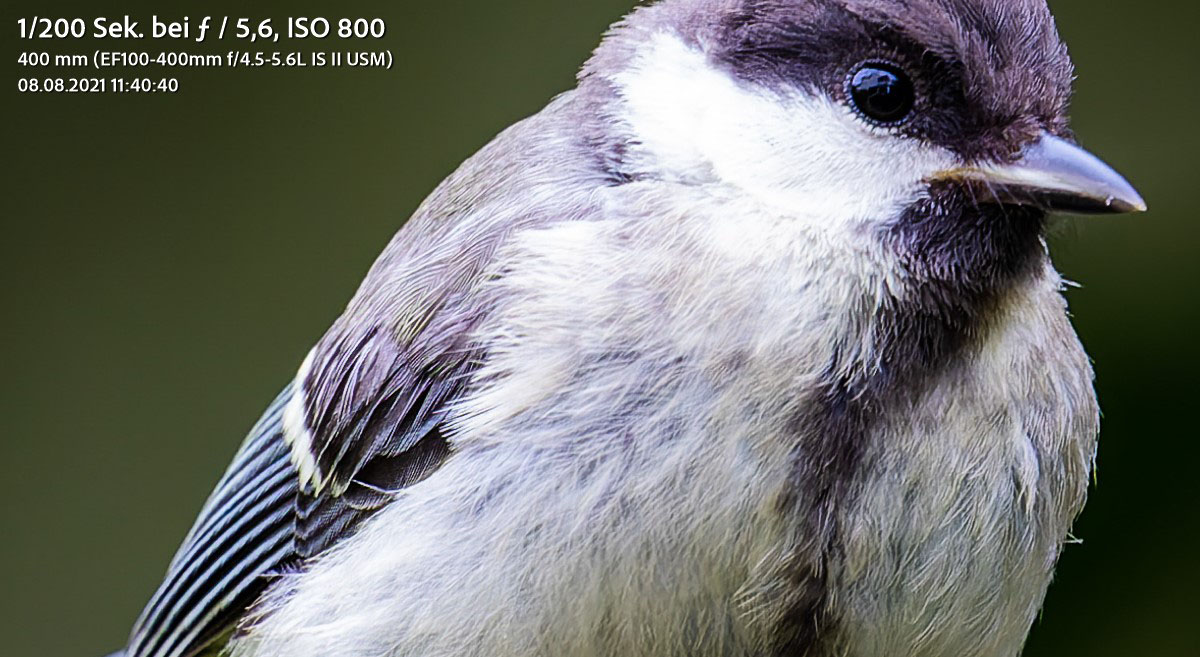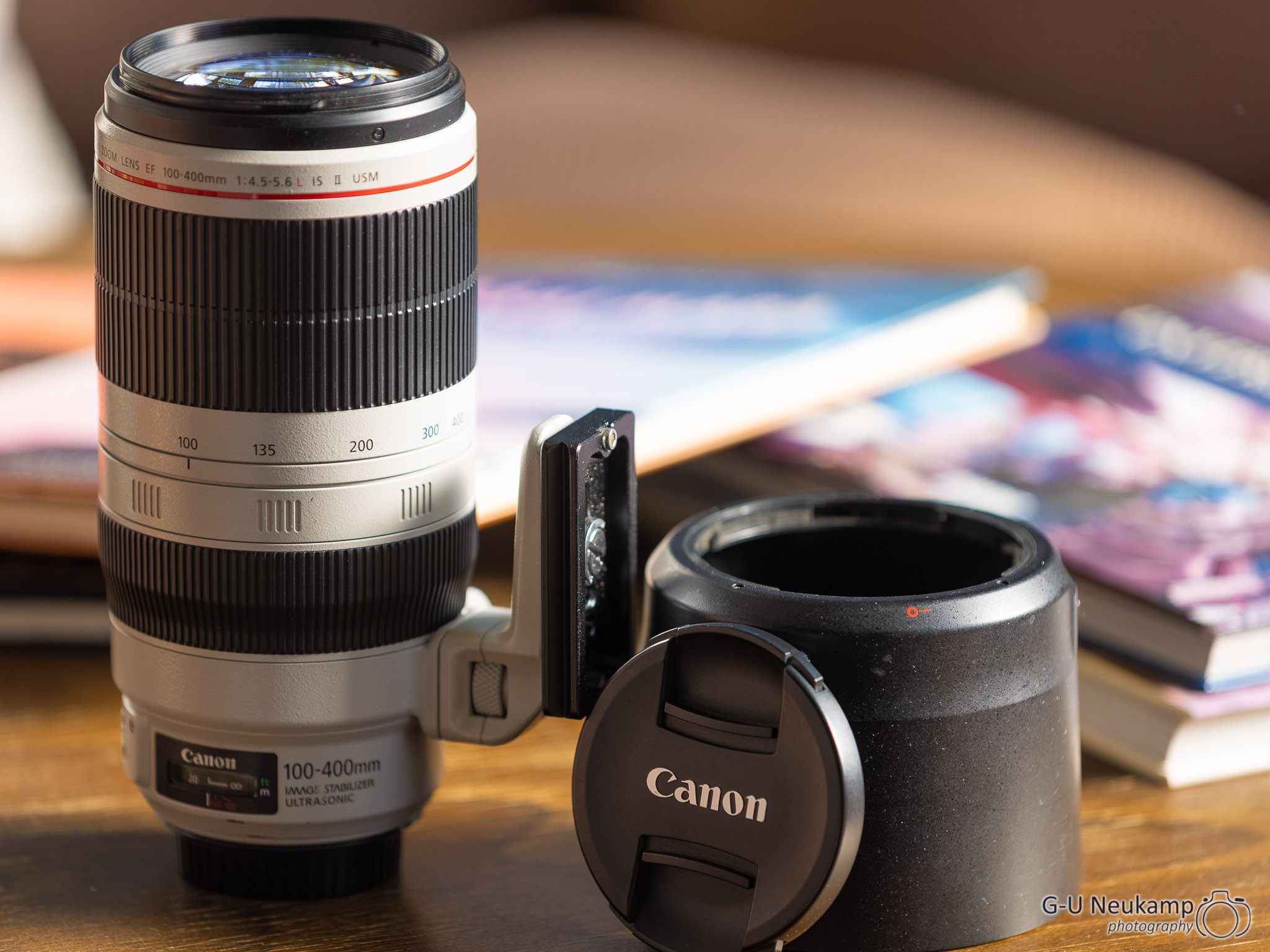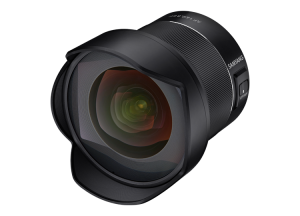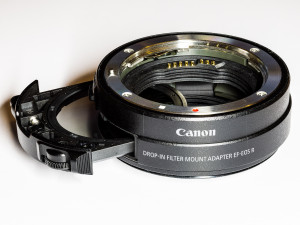Canon EF vs RF
With the mirrorless system cameras of the R system, Canon introduced a new lens bayonet, the RF mount. This is largely identical in diameter and construction to the EF mount of the EOS SLR cameras, which was introduced in 1987 together with the first Canon EOS camera, the EOS 650. The difference is a shorter distance to the film/sensor plane (called flange distance). In addition, the new mount has more electrical contacts and is claimed to be able to communicate faster with the camera.
Fortunately, all currently available Canon EOS R cameras (R, RP, R5, R6) support native communication with existing EF lenses. To compensate for the difference in flange distance, Canon only needs a passive adapter. In my experience with my currently used 11 Canon EF lenses, they work at least as well adapted to my EOS R5 as they did with my previous DSLR bodies. The speed of the autofocus is also on the same level.
Why am I writing all this?
Well, the switch to mirrorless systems for system cameras is in full swing across all manufacturers. The flip-up mirror is a discontinued design, even if many don’t want to admit it. For most brands, it means replacing all lenses if you want maximum autofocus performance and the best image stabilization. The available lens adapters are, for example on Sony and Nikon, only workarounds with limited functions.
Not so with Canon: all existing EF lenses can be used without restrictions (a few ancient exotic lenses excluded). They even partially gain in performance. So I can now use my much-loved EF 85 f/1.2L II and my EF 100 F/2.8 Macro in a stabilized manner on my R5 thanks to the integrated IBIS.
In addition, the ingenious drop-in mount adapter also allows the use of gray / ND or polarizing filters behind the lens, so I can, for example, use both filters with my TS-E 17mm and the Samyang 14mm f/2.8 now.
Furthermore, the lens equivalents of the EF versions in the RF system currently cost several times as much (they are without a doubt also often a bit better) and many focal length ranges are not yet covered.
But apparently the word hasn’t gotten out to everyone that the “old” EF lenses are still perfectly usable. This leads to the fact that many people sell their old “lens treasures” when switching to the R system. Therefore, a lot of EF lenses are currently available on the second-hand market at very reasonable prices. Thus, I have already recently purchased an EF 24-70 f/2.8L II USM second-hand, and I am still thrilled with its performance. It is currently my “always on” when I am on the road.
I recently came across an offer for an used EF 100-400 f/4.5-5.6L IS II USM* lens in d good condition, which again I couldn’t refuse. The lens is also frequently offered in good second hand condition, eg. on eBay*.
The Canon EF 100-400 f/4.5-5.6L IS II USM
In terms of construction, the lens is mostly comparable to the Canon RF 100-500mm F4.5-7.1 L IS USM. The mechanical construction of both lenses is very similar, the build quality is top notch, but the RF offers 100mm more focal length, but then only at an maximum aperture of 7.1. However, the RF costs three times what I paid for the used, but in perfect condition, EF lens. Optically, up to 400mm, both lenses are comparably extremely good. Even with Extender, the EF is still performing very well, as the following example shows:

Since I already cover the 100-400mm focal length range well with my Sigma 60-600mm f/4.5-6.3 DG OS HSM Sports and my 400mm f/2.8L IS II USM, I thought long and hard about whether the 100-400 made sense. But then the price was too good to pass up.
The advantage of the 100-400 is naturally the significantly lower weight (1,590g) compared to the Sigma (2,700g) and the smaller size. In the 100-400mm range, the Canon is optically even better than the Sigma, which is not surprising given the 10x zoom range of the Sigma. Whereas I was quite satisfied with the Sigma so far:

From 401mm upwards, however, the Sigma probably has an advantage, although….
More about this later
A first test
Having now received the Canon EF 100-400 f/4.5-5.6L IS II USM, I briefly tested it in our backyard with the local birdlife. Because of the bad weather, this was also immediately a real tough test. I had to turn up the ISO up to 3,200 to 4,000 at times. I therefore denoised all the images in DxO PhotoLab 4, and afterwards post-processed them in Lightroom Classic, as has proven to get the best results. By the way, all pictures were taken handheld without a tripod. The IS of the Canon 100-400 in combination with the IBIS of the R5 is also outstanding.
First a picture of a great tit at 400mm (already significantly cropped):

And for better comparison a 100% crop:

Can we do more - with extenders?
The Canon DSLRs could only focus at an aperture of at least f/5.6. Only the higher-quality 1 series bodies could still focus with an open aperture of f/8, but then only using the central AF fields. In addition, the image in the optical viewfinder got very dark.
Therefore, I would never have thought of using an extender on a 100-400mm f/5.6 that reduces the aperture by 1 f-stop (1.4x) or even 2 f-stops (2x). This is now much different with the new mirrorless bodies. These allow to use autofocus still at apertures of f/11-f/22, which is what makes the new exotic lenses like the RF 600mm f/11 IS and the RF 800mm f/11 IS reasonable to use. Well, 800mm f/11, that could also be done with the 100-400 with 2x extender…
So I have now also tried my existing extenders with the EF 100-400 f/4.5-5.6L IS II USM. The results have really stunned me!
First of all a blue tit at 560mm (with Canon Extender EF 1.4x III, already significantly cropped to 3,600x2,400 pixels:

And now a 100% crop (1200px wide) taken with the R5:

That looks almost better than without the extender, doesn’t it? Maybe there’s more possible? Therefore also another test at 800mm with the Canon Extender EF 2x III, this time a great tit posed once again. This time the image is cropped to 5.700x3.800px:

For comparison again the 100% crop (1200px wide):

I consider the result to be incredibly good. In the future, I will not hesitate to use the 100-400 with the converters. It’s also amazing, what you can get out of the R5 at high ISO values thanks to the denoising with DeepPrime in DxO Photolab 4. Here’s another example of the same great tit, this time even at ISO 8,000, again a significant crop (approx. 2,800x4,300px):

And again, a 100% crop:

It’s unbelievable what is possible with the latest cameras and modern software today!
Resumée
I am very happy about the new addition to my lens pool. The 100-400 is much more compact than my Sigma 60-600 or even my Canon 400mm f/2.8, but it delivers first-class image quality. And that even with the extenders at up to a focal length of 800mm.
In addition, I can still use it on my trusty EOS 5DSR, which I still like to use as a secondary body - but there it probably doesn’t make sense to use it with the extenders. I am still extremely happy about the price drop of the EF lenses and will continue to observe the market closely in the future. Maybe there is still one or the other bargain - I will report 😉
Finally, a last picture of a sunflower with the 100-400. It also excels in the close-up range:

*= Affiliate link




